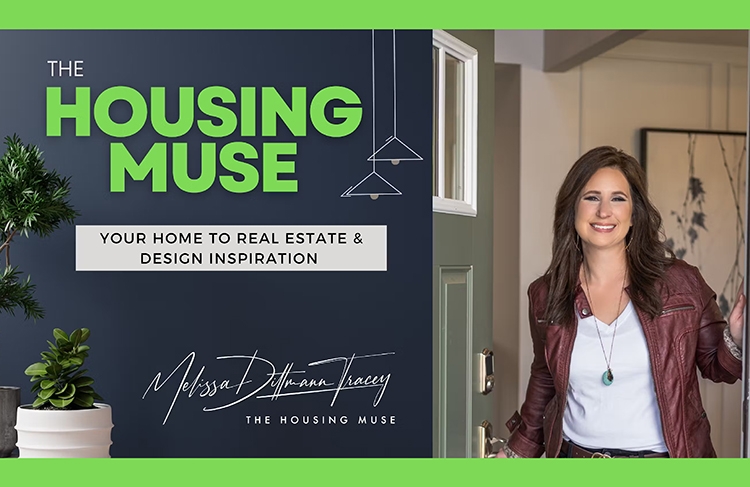
What Wellness Design in Real Estate Really Means
By Melissa Dittmann Tracey
The wellness movement has arrived in housing—and it appears to only be getting bigger each year. According to the Global Wellness Institute, construction of real estate geared toward wellness has more than doubled in the past five years. And the payoff isn’t just healthier living, it’s showing some financial perks, too. The Institute’s research shows wellness-focused residential properties can command a 10–25% price premium over traditional homes.
Wellness is becoming a driving force in how homes are bought, sold and built. “Wellness absolutely drives value,” says Teri Slavik-Tsuyuki, co-chair of the Global Wellness Institute’s Wellness Communities and Real Estate Initiative and founder of the America At Home Study.
Slavik-Tsuyuki shares more behind this wellness design movement in real estate.
Q: The latest America At Home Study shows wellness is now a top motivator for home decisions. Can a home really influence your mental and physical health?
Slavik-Tsuyuki: The CDC and others, including the Global Wellness Institute, have noted that about 85% of our health outcomes are based on our built environment. That means 15% of our health outcomes are genetic and the rest are based on where and how we live. So things like—do we have access to clean air, clean water, fresh and healthy food? Do we have places that encourage movement? Is the home and community designed in a way that encourages social connections with others? Does it even have small private outdoor spaces to get outside and to decompress and to reduce stress? And are there ways to get involved in the greater good within the community?
Q: What are some core features or design elements that really make a property support wellness?
Slavik-Tsuyuki: I’ll address it from two main perspectives:
- At the community level: That really means designing the place for people first, not cars. Think about setbacks—bringing the home’s architecture closer to the street, putting the cars in the back and encouraging life to happen in the front yard. It’s making our streets safer, wider sidewalks, including bike lanes, shade trees and places to sit and connect. And it’s really importantly today to design for a mix of household types … not just all the same single family detached 2,500 to 4,000 square foot home. But smaller homes as well.
- At the home level: Think about natural light with the placement and size of windows. Access to private outdoor space, even small balconies. A kitchen that works and that allows us to cook healthy meals. Every inch in a home counts—there should be no wasted space.
Q: The study found that many homes built today don’t align with how Americans want to live or prioritize wellness. Why is there such a disconnect?
Slavik-Tsuyuki: Homes are still designed for the way we used to live, and they’re designed around rooms—the bed-bath count—rather than as spaces and how people connect. There are accepted norms—like the triangle kitchen, the two-car garage, the long driveway—that’s just not really true anymore to how we live.
One really important stat: 64% of U.S. households are one- and two-person households, and yet 80% or more of the new homes being built are 2,000–4,000 square feet. They’re way too large. And that doesn’t just mean a higher purchase price, but the operating costs: insurance, maintenance, property taxes are all higher, too.
Q: So what are the biggest gaps between what developers are building and what consumers want?
Slavik-Tsuyuki: From our data, it comes down to three key areas: financial, physical and social.
- Financial wellness: We have an attainability crisis … not just purchase price, but hidden costs like home maintenance. A Bankrate study found $20,000–$30,000 a year in hidden costs—that’s another mortgage payment. … We need to build smaller and more affordable.
- Physical wellness: We need to prioritize people over cars. Everybody says they want walkable communities, but if there’s nowhere to walk to or streets aren’t safe, it doesn’t support physical well-being.
- Social wellness: Communities need to offer amenities beyond those for families—spaces for singles, couples, and all types of households to connect. These “third spaces” are often last to come into new communities, but they’re really what people want.
Q: Is there a growing openness toward smaller homes?
Slavik-Tsuyuki: It comes back to awareness of costs beyond the purchase price. Even if mortgage rates drop, that won’t move the needle much. People are marrying later, choosing not to marry, or choosing not to have children. That doesn’t mean a giant home with four bedrooms. The shift to smaller homes has been happening and is related to those changes. And it can support wellness.
Our data shows buyers aren’t trading off wellness, but they are willing to trade off home size or even garages. Forty percent said they’d take a smaller home. Wellness is the number one priority.
Q: Do wellness features like green spaces or fitness amenities impact homeowner satisfaction?
Slavik-Tsuyuki: Absolutely. They help address the loneliness epidemic by providing places for connection. Rancho Mission Viejo in California surveys residents yearly—83% say living there supports their overall wellness. And resale prices were 12% higher than comparable communities. Global Wellness Institute data also shows 78% of U.S. consumers would pay more for a home within walking distance of parks, shops, and restaurants.
Q: Is there any other evidence that wellness-focused homes increase property values?
Slavik-Tsuyuki: Yes. The Global Wellness Institute’s Build Well to Live Well Report shows wellness-focused residential properties can command a 10–25% premium compared to others. Commercial buildings can command 4.5–7.5% rental premiums per square foot. It absolutely drives value.
Q: Can you share an example of an innovative wellness-focused project?
Slavik-Tsuyuki: One of my favorites is Indigo in Houston. It’s built around a working farm. The team reduced street and lot sizes, built smaller homes, and designed every other street as car-free, green space. They also included neighborhood-serving retail from day one. The Global Wellness Institute recently published 13 new case studies on wellness communities throughout the U.S. and U.K.
Q: Looking ahead, how do you see wellness and real estate evolving over the next 5–10 years?
Slavik-Tsuyuki: I think it’s only going to continue to increase because it’s what people say they want. Gen Z is entering the market, and things like energy and water conservation are more important to them than ever. If we don’t bring housing innovation to market and for better supporting wellness, then I don’t know why we’re doing this. There’s a seismic shift ahead—and it’s our opportunity and obligation to make it happen.


